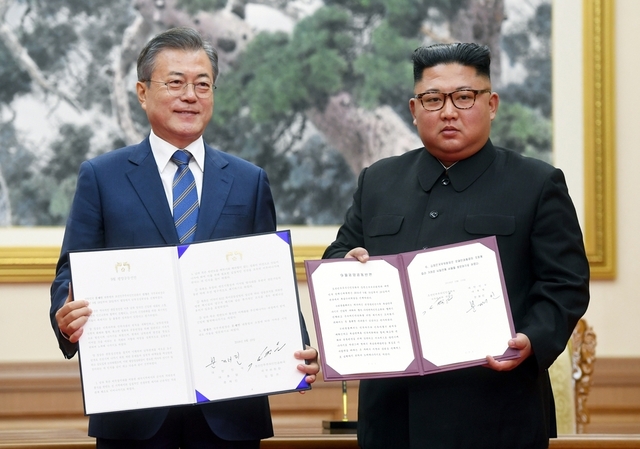 |
|
The Korean Central News Agency covered North Korean leader Kim Jong-un’s inspection of military-affiliated marine businesses in the East Sea region on Dec. 1. (Yonhap News)
|
The factors surrounding the N. Korean leader’s potential Seoul visit within 2018
South Korean President Moon Jae-in’s emphasis on the importance of a reciprocal visit to Seoul within the year by North Korean leader Kim Jong-un and the positive views expressed on the issue by the South Korean and US leaders are arousing speculation on what choice Kim will make. With Pyongyang and Washington currently bogged down in their talks on denuclearization and normalization of relations, Kim is expected to focus on a number of factors as he weighs his decision – including prospects for a second North Korea-US summit, the practical results that could come out of a preceding inter-Korean summit, and opinion in South Korea regarding his visit. Prospects for 2nd NK-US summit With the possibility of a reciprocal visit by Kim in the near future emerging suddenly over the weekend, experts generally predicted it was likely to transpire. Noting the intransigence of US politicians and public opinion opposing negotiations with the North, many analysts predicted that North Korea’s concessions in terms of additional denuclearization measures would need to yield concessions from the US in the form of corresponding measures for US President Donald Trump to show flexibility and establish momentum for a second North Korea-US summit. Under this scenario, Kim is expected to present additional measures during his Seoul visit along the same lines as his pledge during the third inter-Korean summit to allow inspections and conditionally dismantle major nuclear and missile facilities at the villages of Tongchang and Yongbyon. With Kim focusing his efforts on the economy since a decision last April to focus on a strategic course of “focusing energies on building a socialist economy,” the desperate need for the loosening or lifting of sanctions is another factor contributing to the likelihood of a visit in the near future. On Dec. 1, North Korean news outlets reported on Kim’s visits to inspect three military-affiliated marine businesses in the East Sea region. As they were the first reports on Kim’s public activity in 13 days, they were taken by analysts as suggesting that he may have reached some conclusion. The Blue House’s emphasis on the need for Kim to visit in the near future also has a specific context in terms of inter-Korean relations. “At a time when a change in the US position can’t be viewed as a condition, it’s important to build trust between South and North Korea, whatever the political costs,” explained Soongsil University professor Lee Jung-chul. Lee interpreted the Blue House’s push to have Kim visit as soon as possible as being “based on the conclusion that building trust between South and North is of paramount importance, regardless of what happens in North Korea-US relations.” Koh Yu-hwan, professor at Dongguk University, offered a more skeptical take. “While a Seoul visit [by Kim] is the right thing in terms of honoring the inter-Korean pledge, it’s not clear what kind of conclusion they can reach if he comes to Seoul without an answer from the US,” he said.
 |
|
South Korean President Moon Jae-in and North Korea leader Kim Jong-un at the Paekhwawon Guest House in Pyongyang after signing the Pyongyang Joint Declaration on Sept. 19. (photo pool)
|







